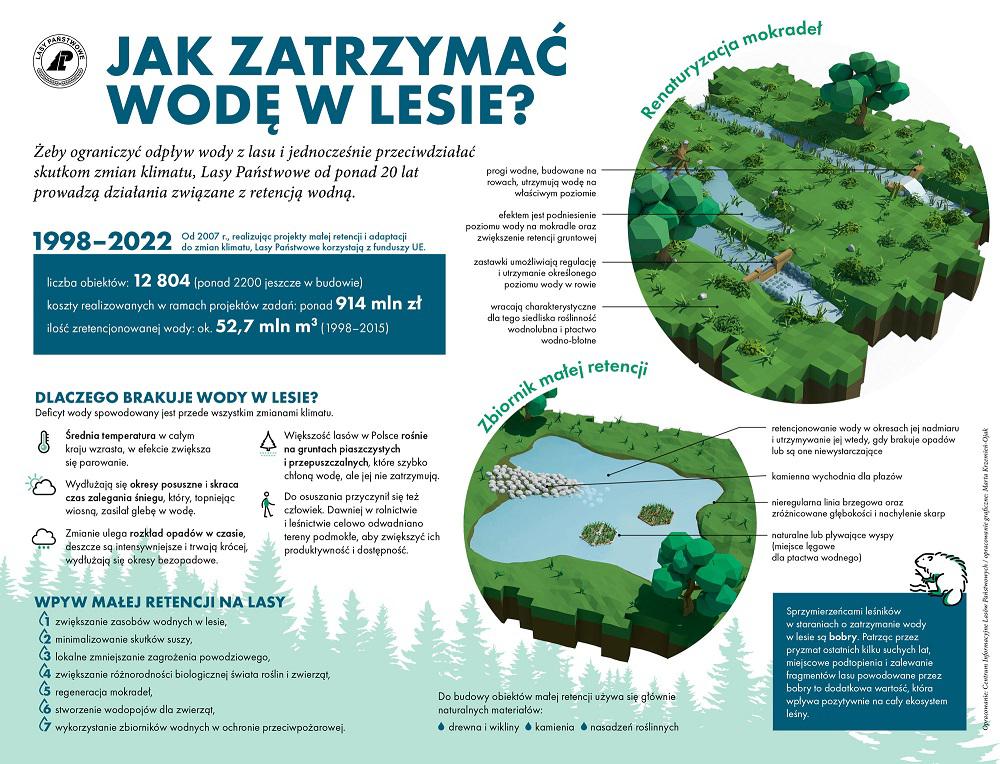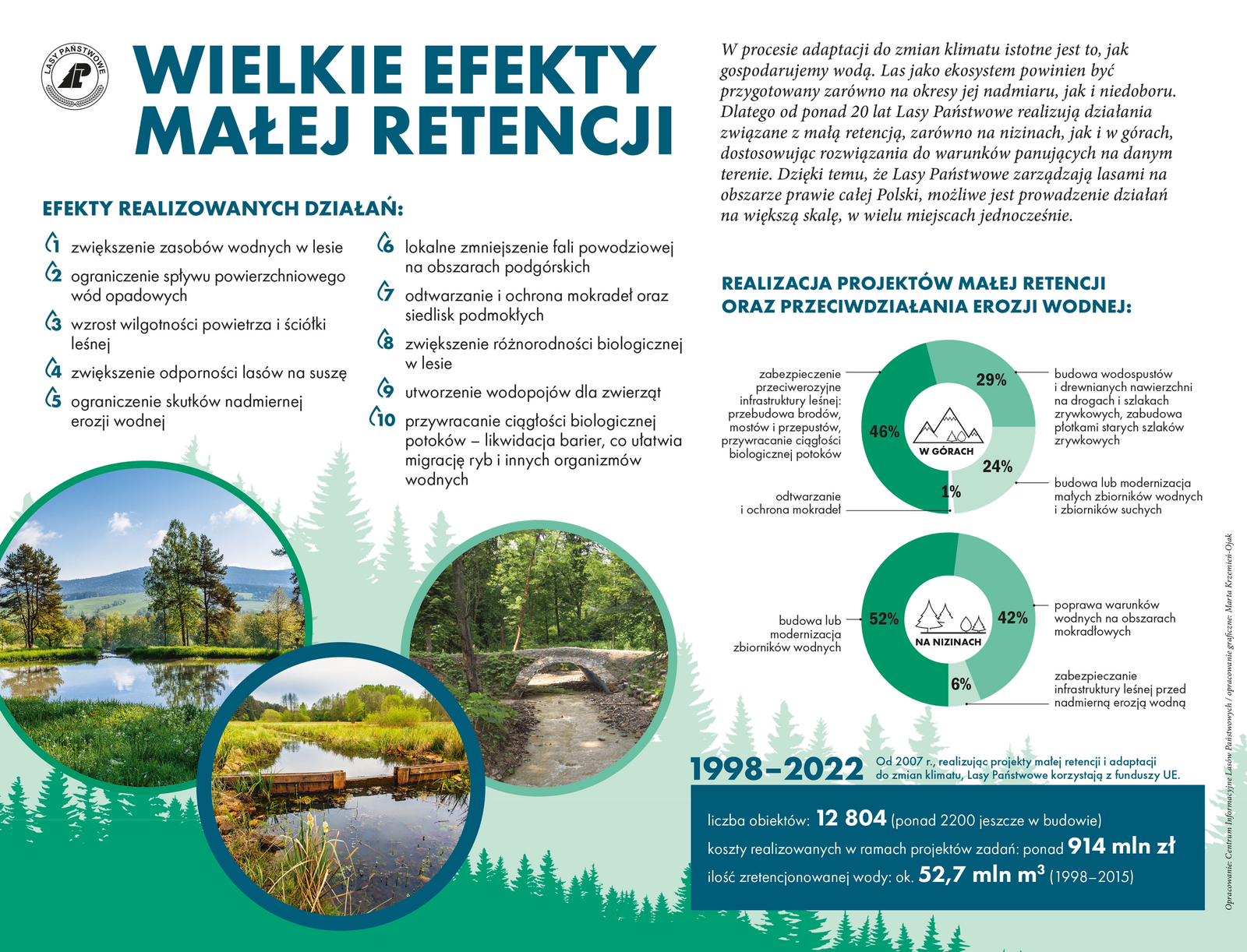Although we live on the ‘blue planet’, water is a very limited good. In its 2015 report on the state of the world’s waters, the United Nations warned of the threat of water scarcity. This fact is mainly blamed on the increasing industrialization. In addition, climate change affects the global water cycle in nature. Already 3.6 billion people suffer from a lack of water. These tendencies are reason enough to start using this valuable raw material responsibly. That’s why we celebrate World Water Day on March 22.
The Role of the Forest in water retention
Already in 1968, the role of forests in water management was noticed. This was reflected in the European Water Charter adopted by the Council of Europe. In Poland, foresters, as part of water retention programs, collect water and slow down its outflow. The forest is a very complex organism that needs water to function. More and more often there are symptoms that the trees are weakened and diseased. A signal that this water is missing is also mistletoe that appears on the trees. Foresters do what they can to keep the forests hydrated, not relying solely on weather conditions. One cubic meter of forest soil is able to retain up to 200 liters of water. Our forests retain, store, purify, and introduce into the natural cycle much more water than all inland water retention reservoirs.
The forest collects water during periods of its excess and gives it to the areas located in the lower parts of the catchment during periods of water shortage.
The forest limits the runoff of rainwater and transforms it into a slow, underground biological circulation.
The forest purifies the water; the process takes place in a particularly active environment of forest soils, which act as a biological filter. It is also important to increase the forest cover (especially in areas at risk of erosion) and to introduce tree stands at the upper limit of their occurrence, on degraded soils with a risk of contamination of groundwater, as well as in woodlots to protect against water erosion and runoff of contaminated surface water. There are many examples of small water retention in the areas managed by the State Forests; penstocks, thresholds, and overflows are built to regulate the humidity of habitats.

Small retention
State Forests, being aware of the important role played by water in the forest, is involved in retention programs as well as protection and sustainable use of wetlands. The activities that foresters carry out in restoring aquatic ecosystems are carried out as part of the project of adapting forests and forestry to climate change and protecting species and habitats.
Small retention has been implemented in forests since the 1990s. During this time, foresters built approx. 13 thousand objects, and the estimated amount of retained water (from projects implemented only in the years 1998-2015) is approx. 53 million m3. There are many ways to retain water in forests. The most important role of small retention is to collect water locally to improve the irrigation of the land. The main purpose of small retention is to protect forests against key threats related to climate change.

World Water Day aims to motivate governments, institutions, international and national organizations as well as communities and citizens to take actions aimed at rational, sustainable, and thoughtful management of water resources. Only the cooperation of many can bring the expected result.

